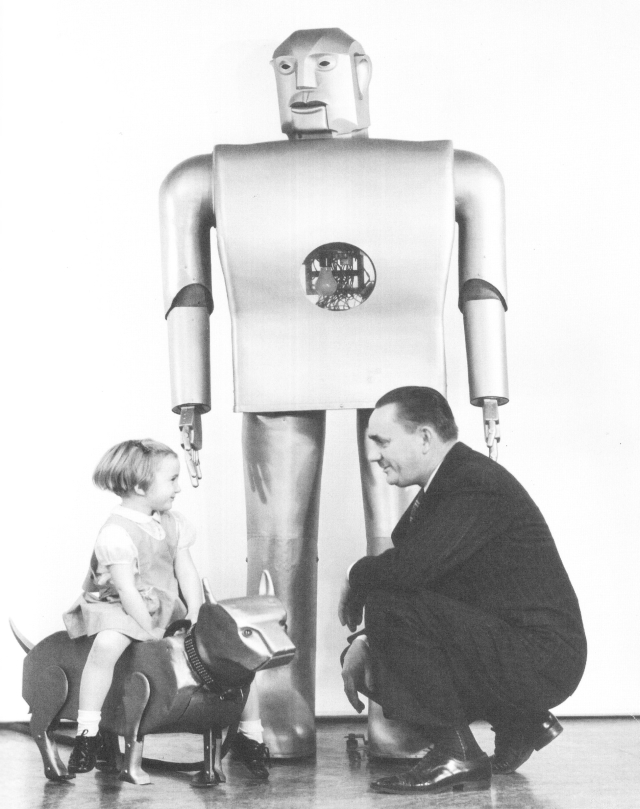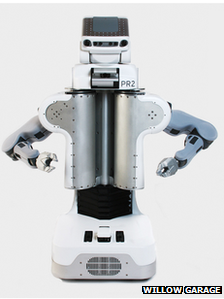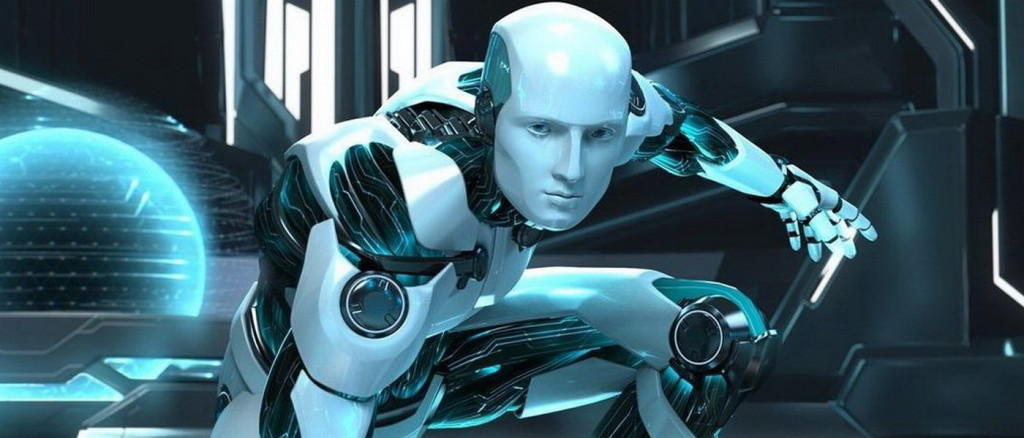It is perhaps one of the greatest moments in movie history. (Spoiler alert!) A mother and child stare at a lifelike giant of a machine that stares at them with one human-looking eye and one torn open to reveal its menacing robotic form. The machine instructs the mother on how to end it and the danger it possesses by lowering him into a cauldron of burning lava below.
“You must lower me down,” says the monster, “I cannot self-terminate.” [Ha! Made you read that in an Austrian accent.]
The boy, destined to save the world, runs to the machine man and embraces him, begging and crying for him not to go. The machine, played by Arnold Schwarzenegger, of course, seems stoic, unable to feel while the boy embraces it in a desperate wave of emotion.
“Don’t go!” cries the boy. The Terminator states its inability to experience the pain the boy is going through, embraces him back, and secures itself to the chain hanging over its ominous doom.
“Goodbye,” it says to them. The mother lowers it down into the fire, and it is gone.
……………………
Things like that only happen in the movies, right? Nope.
As far back as 1939, a “humanoid” named Elektro (cheesy, right?) debuted at the World’s Fair. He stood seven feet tall and could speak 700 words (using a record player), walk by voice command, and blow balloons. The Japanese, of course, had invented a similar model ten years earlier. The first autonomous robots followed in the late 1940’s in Britain, followed by an onslaught of factory-based machines causing lay-offs in companies like General Motors throughout the 60’s and following.

Machines could be constructed to perform tasks otherwise harmful, fatal, or impossible for the human body to withstand (tackling highly dangerous warehouse jobs, exploring the bottom of the sea, documenting planetary systems seemingly light years away in deep space) thus either replaced humans or took them into technological and performance realms we had never seen.
Robot lore dates as far back as the ancient Greeks. There are accounts of “golden maidens” and the like in historical literature that confirms at least the notion of autonomous machinery was there.
Subsequent inventions, such as the innovations and concepts of Leonardo De Vinci made from simple machines brushed the surface of what we now call “robot,” a term coined in Czech literature in the 1920’s.
Modern robotics has taken an incredible step forward to bridge the gap between reality and science fiction. Advanced programmed “autonomous” units have been constructed and developed to perform a wide variety of complex tasks including not only manufacturing, transport, and exploration; but also surgery, defense, and experimentation.
A great deal of funding has gone into this in an effort to spur us on to the “Jetsons” era, which sadly, may turn more into the “Wall-E” era in more ways than one, turning humans into creatures dependent on subservient technology for basic survival.
In 2012, a quadrupedal military “Cheetah,” used as a multi-terrain pack horse, clocked in as the “world’s fastest robot at 28 miles per hour (that’s 3 miles faster than a human sprint). It’s brothers and cousins, Atlas, Petman, Sandflea, and Rise, make up a formidable land-based team that is being tested by the U.S. military for full operational use. While tactical dangers will be somewhat taken away from special and non-land force personnel, the moral implications and on-the-spot judgment capacity will be limited to both pre-programming and the soldier behind the desk. Even now, commanders weigh the value of awarding metals of valor to “accomplished” drone pilots, seeming more like glorified video gamers but in an Ender’s Game setting.

In a world where human charm cannot be replaced, a move towards faster, more efficient conveniences thanks to robotics is upon us and opens up a whole new world of possibilities and danger. All other remarks aside, it’s going to be an exciting next couple of decades. Wouldn’t you agree? [Turns and looks to R2-D2, who bleeps and shakes “his” “head.”]




